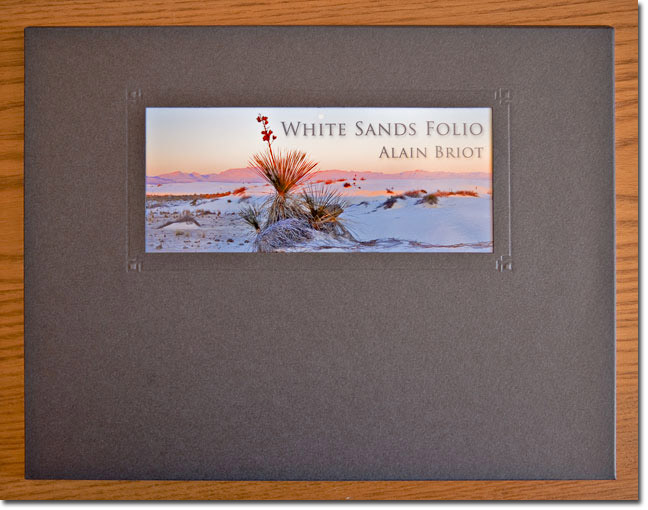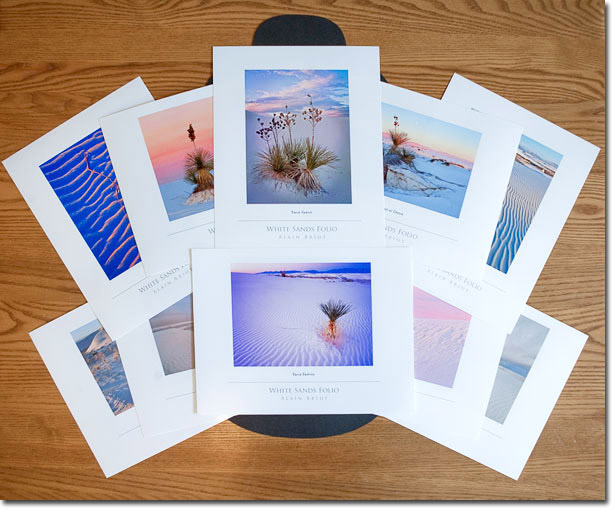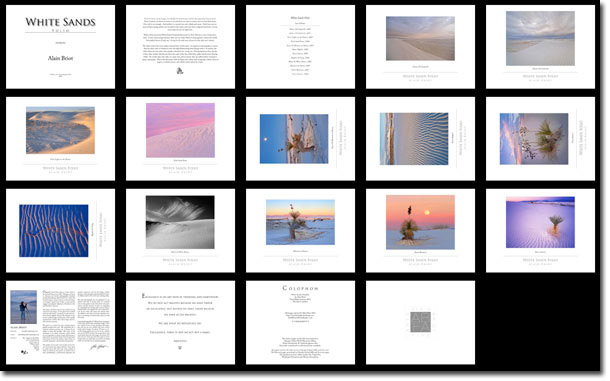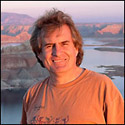|
|
|
The real voyage of discovery consists not in seeking new landscapes but in having new eyes. Marcel Proust
1 - Introduction
At a time when nearly everyone has a camera and access to software to fine tune their photographs, simply creating good photographs is no longer enough to stand out amongst the multitude of photographers that compete for attention. Having great gear is nice but not enough either because other photographers can purchase the same gear. Having great software is not enough because other photographers can purchase the same software. Having access to great subject matter or locations is not enough because other photographers can have access to the same subject matter and locations.
So what can make us truly unique? When everyone has access to the same tools and knowledge, being unique no longer comes from using these tools and knowledge. Being unique, different or original, in one word standing out and expressing a personal vision, comes from using these tools and this knowledge in a creative manner. In a day when hardware, software and subject matter are readily available and accessible, it is our creativity that becomes our ‘success edge’ so to speak.
An effective way to generate creativity is to work on projects instead of on isolated images. In this essay we are going to look at the creative aspects offered by projects.
 A project example: The White Sands Folio |
2 - Focusing our work makes it better
We all work on the same project when we start photography. This nearly universal project is called ‘everything that catches our eye.’ I did work on this project on my way back home from the store where I purchased my first camera. I would still be working on it if I did not have excellent teachers who told me to get off the ‘everything that catches my eyes’ train and move on to a more productive approach to photography.
We cannot photograph everything. Our project therefore cannot be “whatever catches our eye.” If it is, then it is no different than what everyone is doing, because everyone is photographing whatever catches their eye. Doing so is not working on a project, it is simply photographing everything and anything. We can't go on forever shooting everything that catches our eye. We have to move on to better goals and clearer vision in order to make our work better and reach the next step.
The problem with the 'catch my eye' project, if it can be called that, is that it is self centered. We are the only ones who care about everything that catches our eye. Other people are not interested in everything that catches our attention, and neither are we interested in everything that catches other people’s attention.
If you don’t believe me just Google ‘everything that catches my eyes’ and you will see that there are no books, no portfolios, no shows and not much of anything else, project-wise, under that title. That’s because no one cares much about everything that catches your or my eye. People care about what catches their eyes, not ours. What they want from us is something that what we see that they cannot see. That 'something' is our unique take on a specific subject, the unique style with which we represent a specific subject or location, the particular point of view we share with our audience and so on. In other words, what people look for is focus and specificity. They don’t want us to show them everything. They want us to show them something specific and do so in a way that is unique to us.
To be interesting a project must therefore be more than a collection of images whose sole reason for being shown together is that each photo is of something that caught our attention. There are countless things that catch my attention everyday, and yet I don’t take photographs of these things. I used to until, as I mentioned, my teachers took me aside and explained the importance of focusing on a specific subject. That subject can be any of the many things that catch our attention, but it cannot be all the things that catch our attention.
Photographers who achieved a significant level of recognition and of image quality all had a specific focus for their work. Ansel Adams used large format cameras to photograph the American West with a particular emphasis on Yosemite. Henri Cartier Bresson used a 35mm camera to photograph street scenes involving people in a reportage like style with a particular emphasis on Paris. Diane Arbus photographed street scenes that involved dramatic events and police intervention with a particular focus on New York City. Michael Kenna photographs long-exposure night scenes devoid of people in black and white with a square format with a particular emphasis on urban areas. Jerry Uelsmann photographs natural and man made scenes that are used as elements in surrealist photo collages created with multiple enlargers. The list goes on but the common characteristic between all these photographers is how specific the focus of their work is. It is not just the subject matter that is specific, it is also how this subject is approached, what equipment is used, whether the prints are color or black and white, and more.
This sharp focus is largely responsible for the uniqueness of their vision and the interest of their work. Their vision is also what gives birth to their focus. Rather than photographing everything that catch their eye, they pick and choose among all the things they encounter until they see something that matches their focus and that has the potential for creating a successful image. In other words, they are deliberate in their choice of what to photograph. They know what they want and they go out and look for it. Rather than letting everything be their subject, they decide what their subject is going to be then go out and look for it.
3 - What is a project ?
A Project is a group of photographs focused on a specific theme, idea or subject, not just a group of prints on unrelated subjects. A project is conducted along the lines of a coherent personal style. In a successful project, the printing style and the overall quality must demonstrates mastery of the medium.
A projects is an opportunity to express your vision. Vision is best expressed through collections of images rather than through single photograph. Such a collection is called a project.
Another term to describe the process of working on a project is ‘working on a series of images.’ The word series is a term widely used by artists to describe their projects. Just like a project, a series is a group of images focused on a similar theme, idea, subject, concept, etc. Artists have worked on series since times immemorial. Working on single images that are isolated and meant to stand by themselves is counter to an artistic approach and an artistic way of thinking.
By asking us to think in terms of a collection of images instead of a single, isolated image, projects force us to consider visual consistency across the entire project. Each image in the project needs to share similarities with the other images in the project. To use a visual metaphor, I like to compare the individual images to trees and the project to a forest. When you look at a forest from a distance it has a uniform appearance, even though each tree has slightly different characteristics. Working on a project teaches you to look at the forest instead of at the individual trees. It is a powerful lesson.
Projects cause you to stop being excited by a single image and start being excited by a collection of images.
A project has to bring in something new to the subject you photograph. Something we have not seen before. This can be a new approach, a new angle, a new visual presentation, technique, concept, etc.
A project has two sources of interest:
- The concept of the project (how interesting the project is)?
- The individual photos that the project is made of (how interesting each photograph is)
A project has to have consistency. To achieve this the photographs must all be of the same ‘caliber.’ You can’t have strong and weak photographs. There has to be consistency in the quality of the composition, the processing, the printing, the style and so on.
A project is a visual and intellectual exploration of a specific subject or technique.
A project is a collection of photographs that you are proud of.
The completion of a project is a natural development in the career of a photographer. It is the first step towards a higher level of achievement.
In many ways a successfully completed project is a breakthrough, an illumination, a aha! moment, an epiphany. Sometimes, understanding the nature of a project and the differences between working on a project and working on single images is enough to generate this epiphany. The illumination that follows is an opening onto a larger view of photography. In turn the photographer starts to envision greater possibilities for his or her work. Instead of working on single photographs, instead of having just one image to say what he has to say, the photographer realizes that by using a series of images he can say things better and more effectively. To use an analogy with writing, if a single image is a single word, then a project is a sentence. If a single image is a sentence, then a project is a paragraph. If an image is a paragraph, then a project is a chapter. And if a single image is a chapter, then a project is a book. The possibilities of conveying your message through a project are far greater than the possibilities of conveying your message through a single image.
 White Sands Folio contents |
4 - Why work on projects?
Every photographer is eventually able to create one or several good photograph in his/her life. While this is an achievement, it is not all that impressive because a lot of people achieve this eventually. What is impressive is being able to take good photographs, or better great photographs, regularly. If anyone can, eventually, take a reasonably good photo, standing out from the crowd means creating a collection of good photographs. Having a single good photograph is simply not enough to stand out.
In other words, what is important is consistency. To create great photographs regularly and consistently, you have to know what is a good photograph. You have to be looking for something special, you have to be able to capture it in a way that is unique to you, and you have to be able to do this time after time.
The best way to learn how to create great photographs regularly is to work on projects. This is why project are both important and valuable for artists. Projects improve your focus, not just your photography. Projects challenge you to become better not just technically, but also artistically. The success of a project rests with how your audience responds to this project, basically whether your audience understands and relates to your project or not. Therefore, a project challenges you to improve the way you express yourself and forces you to learn how to communicate your ideas more effectively through photography.
A project also forces you to stop photographing randomly and, instead, to start working towards reaching a specific goal. As you do so the project forces you to move away from ambition and towards concretization. It changes your focus from thinking about doing something to actually doing that thing. It forces you to make the shift from ideas to reality and from wishful thinking to implementing.
Working on a project also teaches you how to solve unforeseen difficulties that stand between you and the completion of your project. We will see many more reasons why it is important to work on projects in the next essays in this section.
5 - Finding a specific focus for your project...
We all have boxes of prints on shelves and in closets or folders of images on our computers. Having those does not do us a lot of good. To make use of them we need to organize them first into projects and eventually into a body of work. A project is an organized collection of images, not just a single image or a group of photographs of unrelated subjects. Single photos can be interesting but projects consisting of a collection of photographs focused on a specific subject or concept are much more significant than single images. They are also, of course, much more difficult to complete.
There has therefore to be a theme, a focus, to a project. It can't be just 'whatever catches our eye.' Our eye has to be selective. We have to direct it. It cannot direct us. It can only be let loose in a context, otherwise what we are really doing is photographing 'whatever' and 'whatever' is not a project. Whatever is what everybody does. Projects must be focused just like your camera because if you don’t it will be blurry and out of focus. This means that the first step of a project is focusing your work on a specific subject depicted in a specific manner.
The subject of a project can be anything as long as it is specific. It can be a specific location or subject. It can be a specific technique, a specific color, a specific approach to composition, and of course a specific vision. In that regard the following remarks are important:
- A project focuses your energy in a single direction and towards a single goal?
- You stop photographing things because they “catch your eye”?
- You start photographing things because they fit within your project
6 Projects and Story
A project is a story. It can be a simple story, for example ‘this place is beautiful,’ or it can be a complex story, for example ‘I explored a unique place and this is what I saw and experienced.’
This story needs to make sense. It cannot be overly complicated. In the case of a photographic project the story is told through images. Each photograph represents a specific part of the story. The story can have a beginning, a middle and an end, although it does not have to. It can also follow other verbal story telling genres such as a first person narrative, a short story, a novel, a work of fiction or non fiction and so on.
You can tell stories (visually speaking) in a project that you cannot tell in a single image. For example, because it is a series of images, a project is conducive to cause and effect, if that is the theme of your story. A single picture on the contrary is not conducive to cause and effect because it is hard to show the passage of time in a single photograph.
 All the pages featured in the White Sands Folio |
7 - Projects and Intended Use
Much of landscape photography is intended as wall art. However, your project does not have to be wall art. It can be aimed at a different use such as being displayed on a coffee table, or kept in your library or on your desk. Considering end-uses other than wall art can generates new ideas for your projects. For example you can create a folio, a collection of small prints on letter size paper kept in a cardboard envelope custom made for this purpose. Your project can also be a portfolio or even an artist book.
Similarly, you do not have to target the same end-use for all your projects. While some projects can be non-wall art, such as folios, portfolios, artist books, DVDs, etc. other projects can be wall art consisting of small or medium size prints, while others still can be wall art consisting of large or even massively-large pieces. Some of these wall pieces can be finished traditionally with glass and framing while others can be finished in a more contemporary fashion such as by rear-mounting the prints on plexiglass, or printing on canvas and mounting the prints onto stretcher bars for a gallery mounting finish.
8 - Projects and Medium
You can use elements other than photographs in your projects in order to share your message with your audience more effectively. These other elements can include text, music, found objects (either organic or man-made), graphics, etc. Using other art mediums together with photography makes the content of your work richer and your message more interesting to your audience. It also increases the amount of time people will spend with your work because looking at a multimedia work of art requires more time than looking at photographs alone.
9 - Projects and Number of Images
A project gives you the freedom to use more than one photograph to make your point. Today, we often look at photographs one at a time, in part because digital printing gives us the possibility to print large photographs and large photographs are best seen one at a time. However, looking at a group of small photographs offers different possibilities. For example, the effect created by a folio or a portfolio is very different than the effect created by a single large image. Similarly, presenting a group of photographs on a wall, by using small images all matted and framed in the same style, creates a different effect than presenting a single large photograph.
 The iPad version of the White Sands Folio |
10 - Projects and Intended Audience
You don’t have to have the same target audience for all your projects. Different projects can have different audiences provided your projects focus on different things. For example my Cars Folio addresses a completely different audience than my Landscape Photography Folios and Portfolios.
11 - Projects and Subject Matter
This leads us to subject matter. While you may have a specialty for which you are known, for example I am known for doing landscapes, you can on occasion work on other subjects. You may do so when you run out of ideas for your main subject matter for example, to recharge your batteries so to speak, to generate new inspiration, to explore a new subject you are interested in, to change your mind, or for some other personal reason. These other subjects may not be things you want to work on long term. In fact, you may want to work on them only for a single project.
All you need to remember is that it is OK to do so. It is OK to work on a project on ‘tin toys’ when you are known for doing large landscapes for example. I use this example because this is exactly what I did. I did only 1 project on tin toys, one series of photographs, then I moved on. But doing this project was fun. It was different, it was creative, it refueled my creative energies, it allowed me to change my mind and it let me explore a new subject. This is all good. It is so good for me that in fact I regularly work on what I call ‘small side projects.’ I did one on cars, a favorite subject of mine, which ended up being a folio, an eFolio and an eBook. I did one on guitars, one on GI Joe toys, one on miniature cars and so on.
I got the idea for doing projects on a variety of subjects from my art training. When I studied painting and photography in Paris, we were given assignments on specific subjects. For example I remember being given an assignment on ‘sidewalks’ another on ‘manhole covers’ another on ‘children’ and yet another on ‘passers by’ and ‘street signs’ and a multitude of other specific subject matter, some of which I forgot about others I remember vividly to this day.
What this experience did to me is make me realize that, first, I can be creative when working on a variety of subjects, even though I would not want to spend my entire life working on these subjects. Second, that an interesting project can result from the exploration a subject that I would not have thought of on my own, or that greatly departs from my personal taste. Third, that my audience doesn’t have to be the same for all my projects. While most of my audience finds what I call my ‘eclecticism’ attractive, some tune in to specific projects and tune off other projects. That’s perfectly fine with me because I don’t want my audience to control what I can and cannot photograph or work on. I need the diversity to keep me active! I can’t photograph the same thing all the time, and I can’t photograph the same thing in the same style forever!
12 - Skill Enhancement Exercise
Define your next, or your first project. An excellent place to start is to make a list of potential projects you are excited to work on. Then use the information in the next section, the ten stages description, to help you plan and get started.
13 - Going Further
How to create a personal project is one of the concepts taught in the Personal Style Master Class workshop on DVD. You can read a detailed description of the contents and download the table of contents at this link. How to assemble a body of work is one of the concepts taught in the Vision Mastery Workshop on DVD. You can read a description of this tutorial at this link. It is scheduled for publication in mid-2014.
Alain Briot - NPN 2054
|
 Alain Briot creates fine art photographs, teaches workshops and offers DVD tutorials on composition, image conversion, optimization, printing and marketing. He is the author of Mastering Landscape Photography, Mastering Photographic Composition, Creativity and Personal Style, Marketing Fine Art Photography and How Photographs are Sold. All 4 books are available as printed books on Amazon.com and as eBooks on my website at this link: http://beautiful-landscape.com/Ebooks-Books-1-2-3.html.
Alain Briot creates fine art photographs, teaches workshops and offers DVD tutorials on composition, image conversion, optimization, printing and marketing. He is the author of Mastering Landscape Photography, Mastering Photographic Composition, Creativity and Personal Style, Marketing Fine Art Photography and How Photographs are Sold. All 4 books are available as printed books on Amazon.com and as eBooks on my website at this link: http://beautiful-landscape.com/Ebooks-Books-1-2-3.html.
You can find more information about Alain's work, writings and tutorials as well as subscribe to Alain’s Free Monthly Newsletter on his website at http://www.beautiful-landscape.com and click on the Subscribe link at the top of the page. You will receive 40 free essays in eBook format immediately after subscribing.

|
Alain welcomes your comments on this essay as well as on his other essays. You can reach Alain directly by emailing him at alain@beautiful-landscape.com.